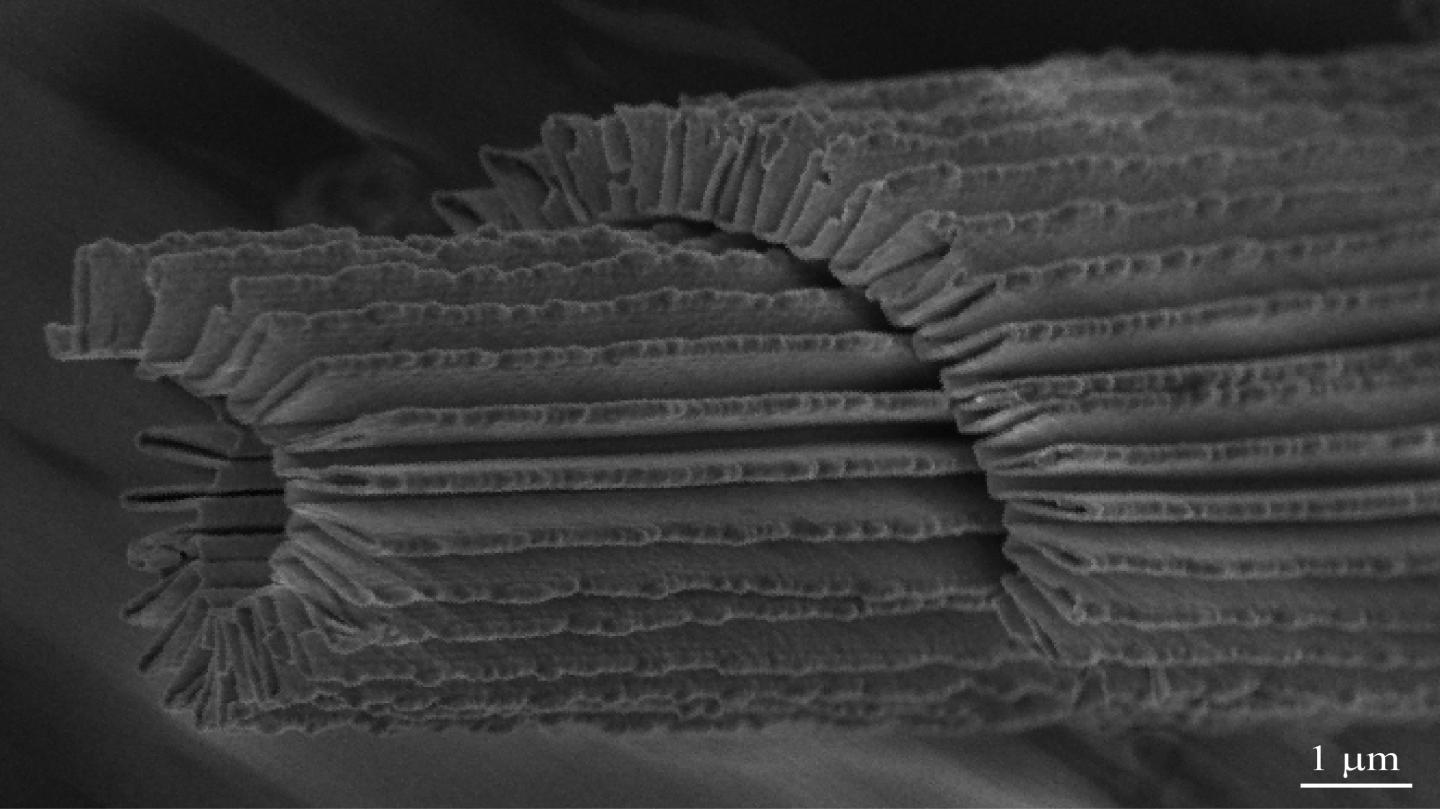Transparent, stretchable conductors using nano-accordion structure
June 26, 2015

A “nano-accordion” material using stretchable, transparent conductors, shown here rolled up to highlight its flexibility (credit: Abhijeet Bagal)
Researchers from North Carolina State University (NC State) have created stretchable, transparent conductors based on a “nano-accordion” design inspired by springs.
Why is this important?
Imagine a material that is a flexible, stretchable, and transparent. So it could be attached to human or robot skin (or woven into clothing) for use as a wearable, stretchable, touch-sensitive smartphone display, for example, or used as a wearable temperature or other sensor. This is the first such material.
“There are no conductive, transparent and stretchable materials in nature, so we had to create one,” says Abhijeet Bagal, a Ph.D. student in mechanical and aerospace engineering at NC State and lead author of a paper in Materials Horizons describing the work.

The fabrication process for nano-accordion structures: (a) A photoresist template is patterned with interference lithography. (b) A zinc oxide thin film is then deposited on the photoresist template and (c) the structure is transferred by lift-off onto a polydimethylsiloxane (PDMS) substrate. (credit: Abhijeet Bagal et al./Materials Horizons)
The researchers begin by creating a 3-D polymer template on a silicon substrate. The template is shaped like a series of identical, evenly spaced rectangles. The template is coated with a layer of aluminum-doped zinc oxide (the conducting material) and an elastic polymer is applied on top. The researchers then flip the whole thing over and remove the silicon and the template.

Zinc oxide ridges on an elastic substrate. The dimensions of each ridge in the transparent conductor directly affect the structure’s stretchability. The taller each ridge is, the more stretchable the structure. This is because the structure stretches by having the two sides of a ridge bend away from each other at the base — like a person doing a split. (credit: Abhijeet Bagal)
What’s left behind is a series of symmetrical zinc-oxide ridges on an elastic substrate. Both zinc oxide and the polymer are clear, so the structure is transparent. And it’s stretchable because the ridges of zinc oxide allow the structure to expand and contract, like the bellows of an accordion, and can be stretched repeatedly without breaking.
“We can also control the thickness of the zinc oxide layer, and have done extensive testing with layers ranging from 30 to 70 nanometers thick,” says Erinn Dandley, a Ph.D. student in chemical and biomolecular engineering at NC State and co-author of the paper. “This is important because the thickness of the zinc oxide affects the structure’s optical, electrical and mechanical properties.” (The researchers are also experimenting with other conductive materials.)
“This approach combines engineering with a touch of surface chemistry to precisely control the nano-accordion’s geometry, composition and, ultimately, its overall material properties,” says Chih-Hao Chang, an assistant professor of mechanical and aerospace engineering at NC State and corresponding author of the paper. “We’re now working on ways to improve the conductivity of the nano-accordion structures. And at some point we want to find a way to scale up the process.”
NCSU | Transparent, Stretchable Conductors Using Nano-Accordion Structure
Abstract of Multifunctional nano-accordion structures for stretchable transparent conductors
Multifunctional nano-accordion structures exhibiting a unique combination of conductivity, stretchability, and transparency are fabricated through a combination of nanolithography and atomic layer deposition. The nanostructured material demonstrated two orders-of-magnitude improvement in stretchability, repeatable electrical performance for cyclic stretching and bending, and broadband optical transmission up to 70%. The proposed experimental techniques and analytical models enable the deterministic design of nano-accordion geometry to control material stretchability. The proposed nanostructures are promising for applications in transparent flexible electronics, stretchable displays, and wearable sensors.